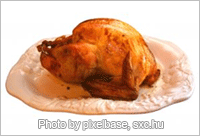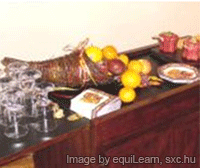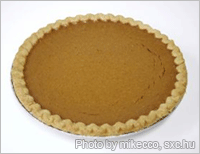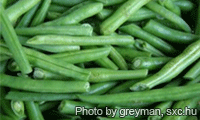As you sit around the dinner table this Thanksgiving, there are bound to be certain foods and decorations that are part of the holiday's longstanding traditions. While some symbols are easy to connect to the past, others might not be so obvious. To clear things up, here is a list of the most common Thanksgiving symbols and their meanings.
Turkey

Photo by pixelbase, sxc.hu
The centerpiece of any Thanksgiving celebration is the turkey, hence the holiday's nickname, "Turkey Day." Turkey was likely on the menu at the very first Thanksgiving, since wild turkeys were abundant in the area of the Pilgrims' settlement. Incidentally, other birds were probably eaten at the first Thanksgiving, such as ducks, geese, swans, and even eagles. The turkey, with its colorful plumage and generous build, has since become the symbol most associated with Thanksgiving. Even vegetarians have kept the turkey as the main focus of their holiday dinner by serving a Tofurkey instead of the actual bird.
Pilgrims and Native Americans
No Thanksgiving decorations are complete without paper cutouts or figurines of Pilgrims and Native Americans. After the Pilgrims left England to come to America, in 1620, they depended on the Native Americans to help them survive. The Native Americans not only helped the Pilgrims to make it through their first winter in their new home, but they also helped them to plant crops. After the fall harvest of 1621, the Pilgrims and Native Americans joined together to have a feast celebrating the season's abundance.

Image by equiLearn, sxc.hu
Another decoration associated with Thanksgiving is the cornucopia, a horn-shaped wicker basket overflowing with (real or fake) fruits and vegetables. This symbol has its roots in Greek mythology. Though there are several variants of the story, they all involve a goat that provided its milk to the Greek god Zeus, when he was a baby. The horn of that goat came to symbolize fertility, good fortune, and abundance. The cornucopia, which means horn of plenty, has long been representative of the harvest season. Though it has its roots in an ancient civilization, the cornucopia has survived as an icon of the modern Thanksgiving celebration.
Cranberries
Cranberries are another icon of the Thanksgiving table. Whether made into cranberry sauce, put into stuffing, or consumed as cranberry wine, no Thanksgiving is complete without some type of cranberry product. Cranberries are native to New England and are harvested in the fall. The Pilgrims originally called the fruits crane-berries, since the flowers of the cranberry plant resembled the head and neck of a crane.

Photo by mikecco, sxc.hu
Pumpkins are another late-harvest crop that was plentiful to the Pilgrims. While often associated with Halloween, pumpkins are also an essential part of Thanksgiving. Though the Pilgrims ate their pumpkins simply boiled, today the vegetable finds itself in the form of soup, ravioli, and pumpkin pie. Pumpkins are also part of the décor for any Thanksgiving celebration.
Corn
Corn was one of the crops that the Native Americans taught the Pilgrims to grow. It is also one of the main symbols of Thanksgiving. Corn is used both in holiday recipes and as decorations. It can appear on the holiday table as cornbread, corn pudding, or succotash, and it can be served straight up on the cob. Corn stalks are often used for decorating the outside of the home by tying them to lamp posts or attaching them to the front door. Colorful Indian corn can also be used to make both the inside and outside of a home more festive.

Photo by greyman, sxc.hu
The Native Americans also taught the Pilgrims how to grow beans by letting the vines of the bean plants attach themselves to the corn stalks for support. Beans were an integral part of the Pilgrims' diet and certainly appeared at the first Thanksgiving meal. Beans are still commonly served at Thanksgiving, usually in the form of a green bean casserole topped with fried onions.
Home
Thanksgiving is one of the busiest times of year for traveling. That's because so many people go back home to celebrate the holiday with their loved ones. Just as the original Thanksgiving was a way of celebrating the Pilgrims' success in a new home, we still associate the holiday with a sense of coming home and being thankful for what you have.